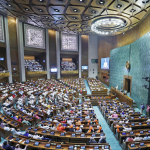CASI Deep Dive: Urmilla Deshpande and Thiago Pinto Barbosa on the Complex Legacy of Pioneering Indian Scholar Irawati Karve

Irawati Karve, regarded by many as India’s first female anthropologist and certainly the first woman to occupy a university position in the discipline, ought to be a household name. While some may know her for Yuganta, a series of Marathi essays examining the morality of figures in the Mahabharata that won the Sahitya Akademi Award in 1968 and received great acclaim in its English translation as well, Karve’s life (1905-1970) and work encompass much more.



